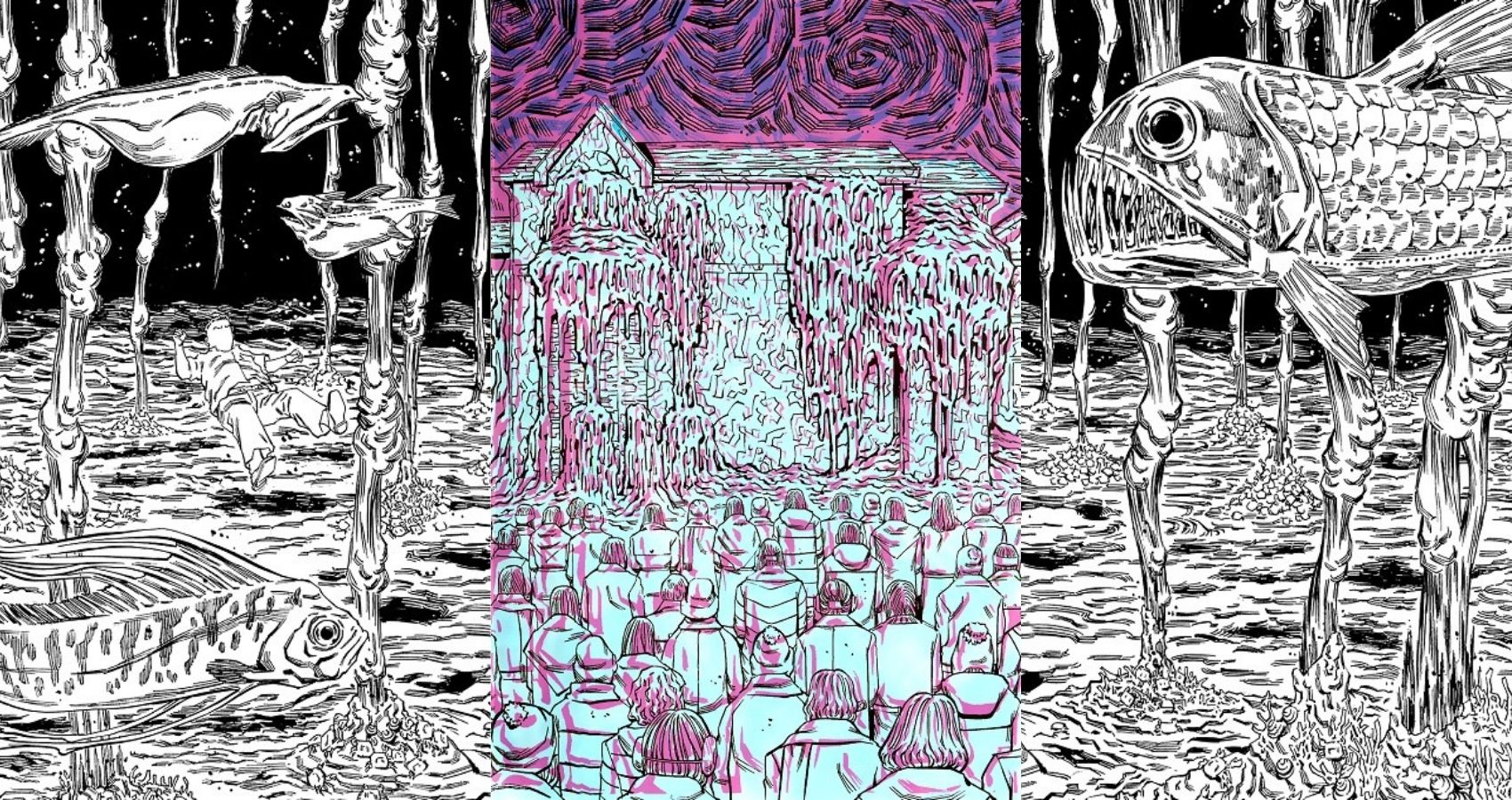
Soil is a title I have been familiar with for some time, existing as a cult title that had yet to be published in English. Consequently, I had been tempted previously to get into the series, but I found my desire to acquire a physical copy of it kept leading me to put it down in hopes of one day getting that release. Sadly, that has yet to happen, yet I decided it was time to dig deep into Soil and give it some proper recognition – hopeful any discussion on it will push for that coveted physical release.
Running a total of 11 volumes, I made my way through the series determined to reach the end, to let the good readers know if taking a journey to Soil town is the macabre child of H. P. Lovecraft, Junji Ito and David Lynch that people seemed to claim it to be. So, did I regret my visit into the sleepy little cursed town? Or am I now, like the denizens, forever bound to its chaotic charms?
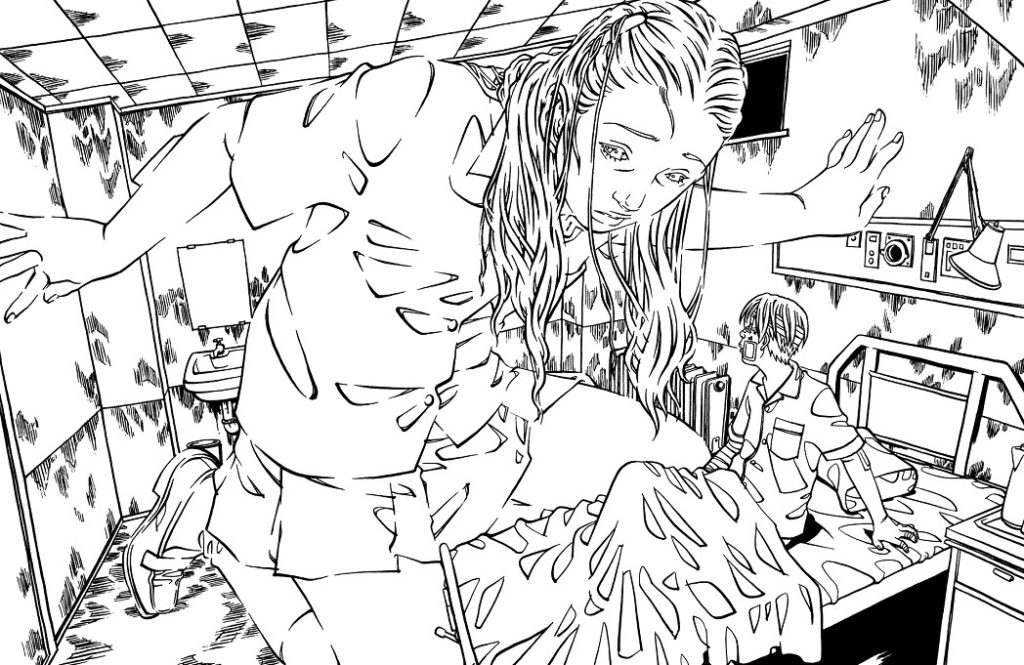
What is it About?
“In the idyllic, suburban Soil New Town, everyone’s lives are picturesque, down to the mandatory perfectly manicured flower bed in front of every house. But this peaceful façade is shattered when the well-known Suzushiro family disappears during a power outage, leaving behind nothing but a pillar of salt. Things get even weirder with the arrival of a mountain of this same salt at the local school, a crossdresser fixated on transmission towers, and threatening messages demanding that every citizen pay a portion of the Suzushiro family’s ransom. The plain and often-frazzled detective Onoda and her sexist and hygienically-challenged boss, Sergeant Yokoi, are called in from out of town to help, but it’s a tough case to crack. Will they be able to get any information out of the gossiping townspeople, all of whom hate outsiders and have something to hide?”
The above acts as an official synopsis for the series, but exists more as a starting point. The story of ‘Soil Town’ is a complex one with many twists and turns- the town and the inhabitants distort into drastically different visions from the idyllic town the reader first experiences. Horror, mystery, and extreme violence is common – the subjects warping through otherworldly events to create something familiar (grounded in genre tropes) yet unique unto itself. Essentially, Soil is one of those titles that needs to be experienced as it is impossible to summarize the overall plot.
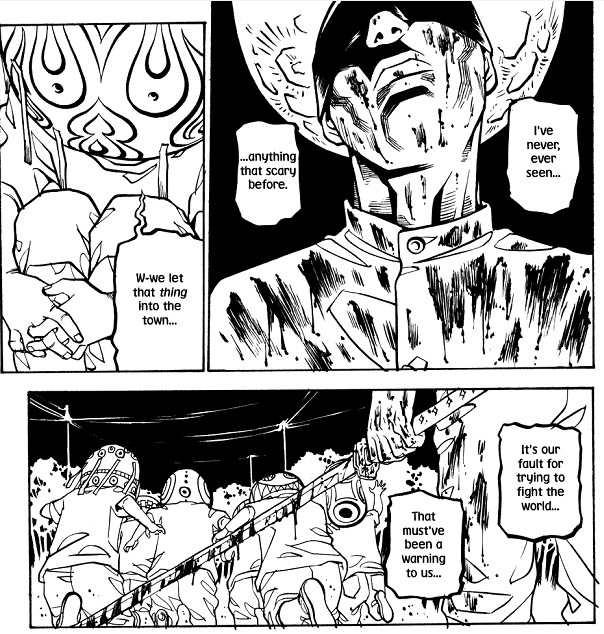
What Worked
There is a certain understanding that locations hold a sense of memory, the idea of tainted land or unsafe spaces being something that is universally conveyed through both stories and experience. Extending this to a personal level, few people on this mortal coil would be able to say they never had the sensation of experiencing being in a place that just does not ‘feel right’. This sets the stage for Soil Town, a small village obsessed with perfection but resting on tainted land. Consequently, as the veneer begins to peel back and the history of the town (atrocities built on top of failures), the mishaps that fall on the town take on an understandable cosmic justice – every attempt to rebuild compacting the shaky foundation it rests on.
Essentially, the stage of the peculiar events is built on the perfect corrupt foundation and exploration of the town history becomes a driving element in creating the lore. Detective Onada and Yokoi’s investigation starts at looking at the human element before diving into the town itself (both figurately and literally) slowly inundating the reader to the depth of horrors the doomed town exists upon. In this regard, particularly with the town becoming overrun by spirals to indicate breaches in reality, the series does hit those cosmic horror notes celebrated through the work of creators like Junji Ito.
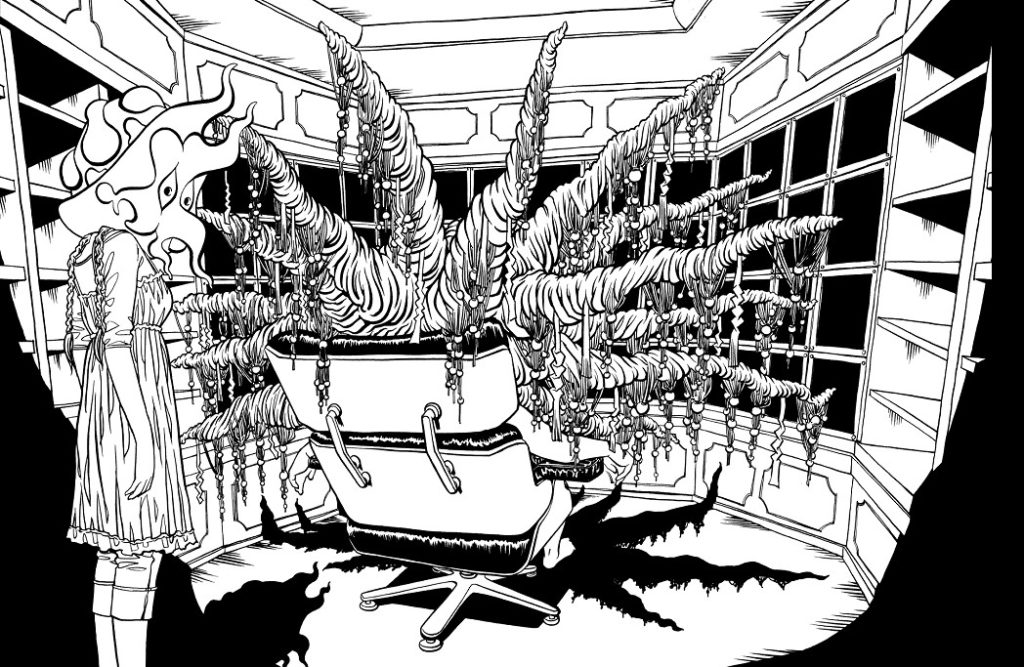
There are a lot of twists and turns within the narrative: a serial killer with a sword running through town projected by a madman in an asylum, a house that becomes nestled in an alternative reality where children battle and plot the downfall of the town, and a hoarder who surrounds himself with absurd items to interpret the cosmic absurdity that haunts the town. These are just a few moments within the book, but all of them manage to make sense and complement the eventual climax. Ultimately, the series can be very absurd and abstract, but it never loses vision of the mystery that first draws the reader in – every piece makes sense no matter how broken and confusing it is.
Mangaka Atsushi Kaneko has a rather unique art style within Japanese comics. At points, the art presents itself as westernized – favoring rounded forms over straight defined lines. This gives the title a pop-art aesthetic with an almost commercial feel. Oddly, I found myself constantly comparing the work to Paul Pope, an iconic artist who has worked both commercially and within indie comic space. Browsing Atsushi Kaneko’s other work such as Bambi and The Pink Gun, the similarities in style become even more apparent. Admittedly, it took me a while to warm up to the art style, but at the most expressive – sprawled across two pages – the visuals are stunning visions of madness.
What Did Not Work
I feel that the overall pacing of the series was a bit awkward during the last few volumes. Personally, the series escalated to a giddy absurdity around volume 8 and it could not top itself from there. However, this is a soft critique to not cheat and leave this section blank. There is nothing in the story that I would change, but for myself, there was a bit of trepidation in tackling the complex narrative throughout the later volumes before I was able to coherently put everything together – the reveal near the end has me rather gobsmacked.
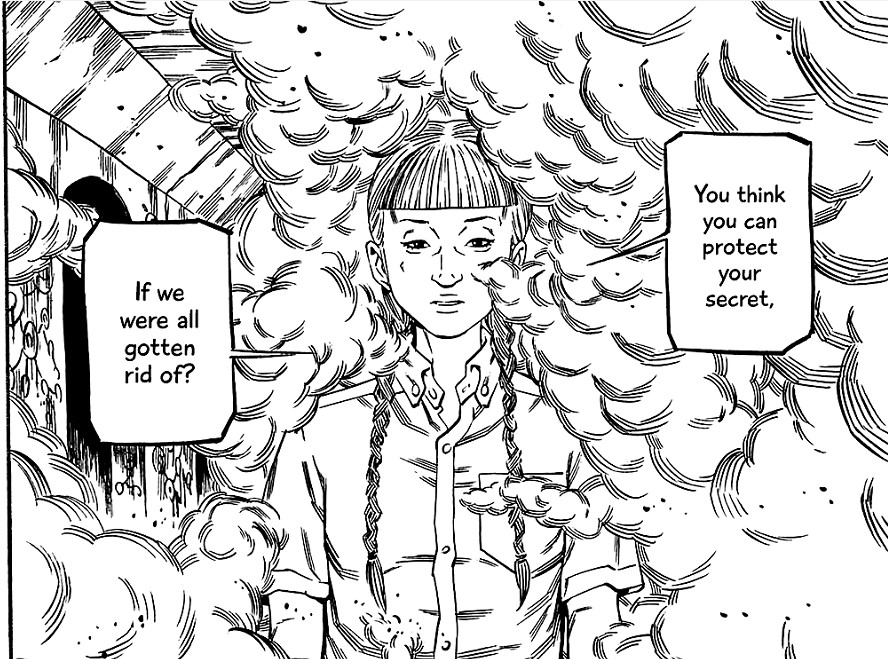
Overall Thoughts
Soil is one of the best series I have read in some time, it also kind of straddles genres in a way that I think it would also click with fans of American indie comics, particularly within its noire elements and abstract concepts. I could easily see a company like Fantagraphics or Drawn & Quarterly giving this series the justice it deserves.
Reading such an eccentric title in digital was a bit of a drag, but I also implore readers to suggest Soil when any manga publisher seeks ideas for works to localize and adapt. This book truly does deserve a physical English edition.
I am excited to check out more from Atsushi Kaneko. Through my experience with Soil, I had visions of stuff I absolutely love – creators like Junji Ito, Paul Pope, Lovecraft, and Lynch all appearing as influences – while still feeling like a completely unique vision.
Don’t miss out! Why are you not reading it now?!
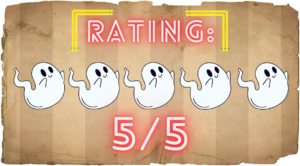
More Manga Reviews:
At some point in history, the magical girl genre existed as the pinnacle of wholesomeness. Yet, Madoka Magica became a staple as the deconstruction of it. At this time, it… While waiting for the release and review of the volume 5 and 6 of the manga Siren Rebirth, I thought it would be nice to focus on some previous manga… Junji Itō is easily the most prolific horror mangaka in English translation. Viz Media has made a concerted effort to bring as much of his work to the west as… This was way, way back in the Before Times when JoJo’s Bizarre Adventure wasn’t a weird looking Adventure Shonen filled with Stands, memes, and confusing masculinity. It actually started out… After contributing to periodical manga magazines such as Manga OK in the mid-60s, the ever-ambitious Taro Bonten would decide to create his own bespoke gekiga magazine in 1969 named Black… Always on the prowl for new horror manga to check out, you sometimes have to browse off the beaten path. Randomly looking into titles lead me to Man Eater by…Magical Girl Site (2013) Manga Review: It’s Not Madoka and That’s Completely Okay
Forbidden Siren Manga Reviews (One-Shots): Demon’s Voice & Memory of the Mermaids
Sensor (2019) Manga Review – Junji Ito’s Take On Cosmic Horror
Jojo’s Bizarre Adventure and Its Origins in Horror
Black Punch – The Premier Horror Manga Magazine of the 1970s
Man Eater Manga Review – Yosuke Takahasi’s Deadly Obsessions





